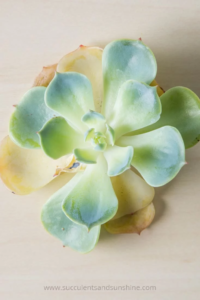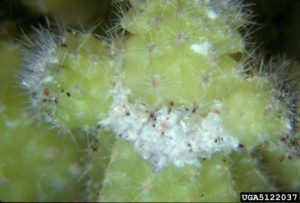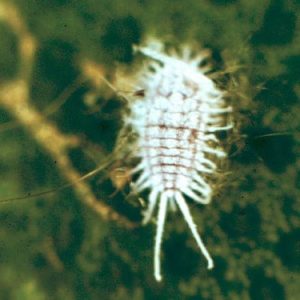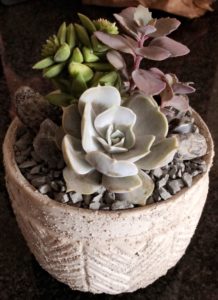Written by Hannah Ayala – Extension Assistant
Like all plants, your succulent could be suffering because of a plant pathogen, an insect pest, or an abiotic factor. When it comes to succulents, there are some issues that are more common than others. One of the most common problems we find in samples that come into the lab is caused by overwatering. Cacti and other succulents are mostly found in areas with low rainfall. This means that they store more water than other plants, hence their “puffy” foliage. This also means that your plant probably does not need to be watered as often as other plants. A succulent should be watered once a week, maybe more if your plant is in a dry place. Watering should be done when the soil is dry, to encourage root growth. When watering your plant, make sure to soak the soil and not just spray the top. Also ensure that your plant is in a pot that allows drainage through the bottom and in soil that drains well.
Another abiotic factor that could stress out your plant is sunscald. Plants love sunlight, but some succulents will not do well in too much heat and direct sunlight. The pot that your succulent sits in can heat up much faster than the ground, leaving your soil parched faster and your succulent “burning”. It is recommended that a succulent is placed in “bright shade”, where it will get the direct sunlight in the cooler hours of the morning then shade the rest of the day to stay cool.
Stress caused by either sunscald or overwatering can make your plant vulnerable to plant pathogens as well. A common disease affecting succulents is Soft Rot, caused by the bacterium Erwinia carotovora. The bacterium can enter plant tissue through natural openings and wounds. The diseased tissue will appear soft, watery, and black. The best way to avoid this is by treating broken tissue with a copper fungicide and avoid placing plants where there is high humidity.
A fungal pathogen called Anthracnose (Colletotrichum (Gloeosporium) spp.) can commonly affect several species of cacti. Initial infection will appear as small spots that will later enlarge into a moist, light brown rot and become covered by small, light pink spore-producing structures. The infection can spread to large areas, sometimes eventually destroying the plant. Copper fungicide may help in checking the disease, but the most that can be done is to remove and destroy the infected cladode or leaf once noticed.
Additionally, overwatering can attract insect pests, specifically mealybugs. These insects tend to nestle near the plant nodes. Mealybugs can rapidly take over your plant and cause stunting or misshapen new growth. It is recommended that severely affected leaves be removed and destroyed. Water spray can be used to wash off mealybugs from the leaves. There are also insecticides that have efficacy against mealybugs. Don’t let these insects make a MEAL-y out of your plant.
These are just a few factors that could be affecting your plant. Do not be discouraged if your plant suffers from any of these factors. Hopefully this information is helpful as you continue caring for your succulent or if you decide to take on more plant babies!
Tl;dr Do not overwater your succulents.
References:
https://plantdiseasehandbook.tamu.edu/landscaping/flowers/cacti-and-succulents/
https://www.succulentsandsunshine.com/







